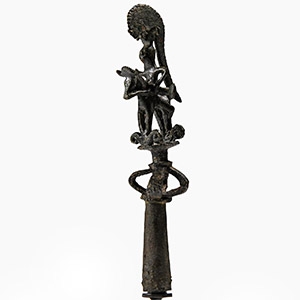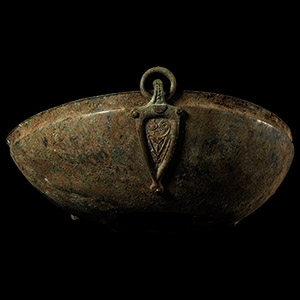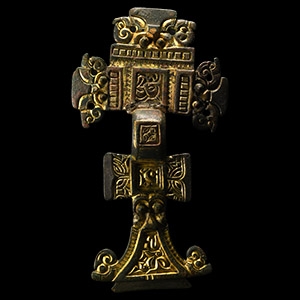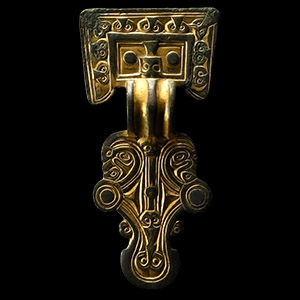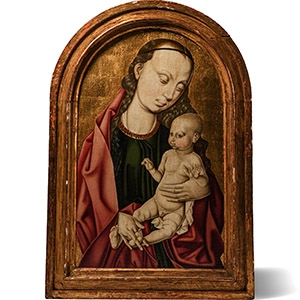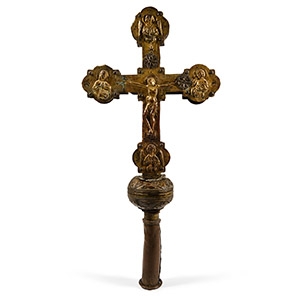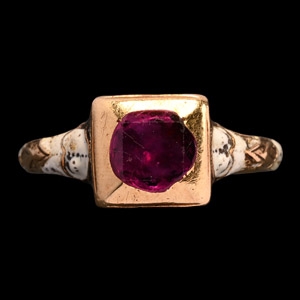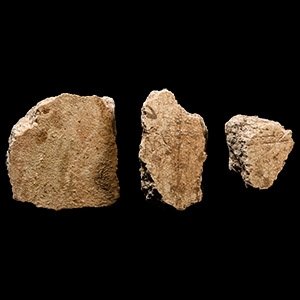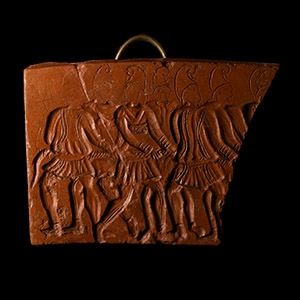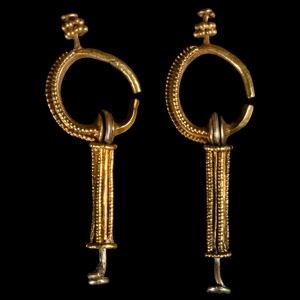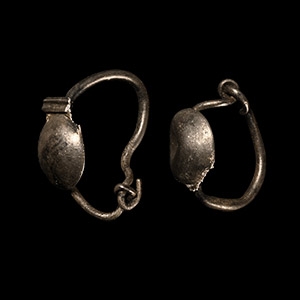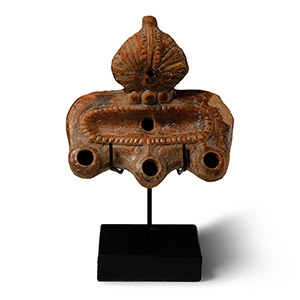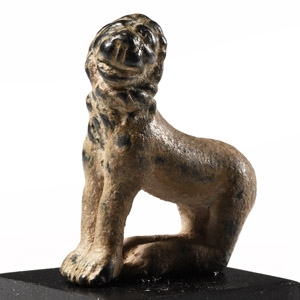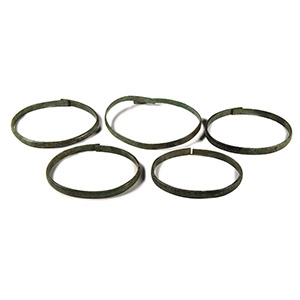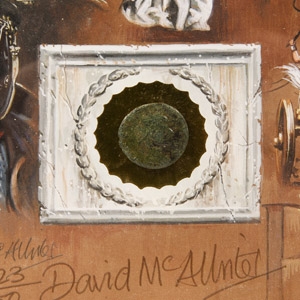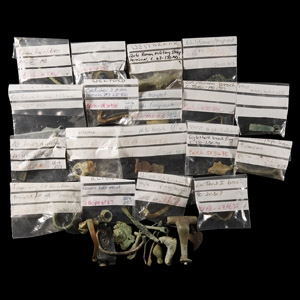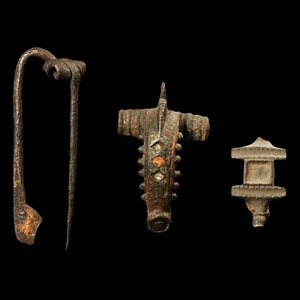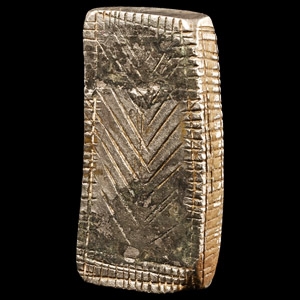Home > Auctions > 5 - 9 September 2023
Ancient Art, Antiquities, Natural History & Coins
Auction Highlights:
From a North London collection in the 1990s.
Acquired 1960s-1990s.
From the late Alison Barker collection, a retired London barrister.
Cf. for a similar image of warriors see the miniature of Ilias Amrosiana in Del Como, D. (ed.), Omero, Iliade ed Odissea, Milano, 1983, p.507.
The scene probably represents an episode of the Trojan cycle, with the Trojans (usually represented in Late Antiquity with a Phrygian cap, wide sleeved tunics and Persian-style trousers) dragging the wooden horse inside the walls of Troy. In the late Roman Empire the Trojan cycle became often the subject of artistic representations, such as the famous Ilias Ambrosiana now preserved in Milan, or the miniatures of the Vergilius Romanus.
From the collection of a North American gentleman, formed in the 1990s.
Acquired on the UK art market.
Property of a Ruislip, UK, gentleman, by inheritance.
From the collection of the German specialist Arno Jumpertz, Leverkusen, Germany, 1924-1984.
Most of the collection was exhibited at Neus museum in 1985.
‘The Ancient Menagerie Collection’ formerly the property of a Cambridgeshire lady, collected since the 1990s and acquired from auctions and dealers throughout Europe and the USA, now ex London collection.
From the family collection of a Surrey gentleman since before 1960.
Cf. Boucher, S., Inventaire des Collections Publiques Françaises - 17 Vienne: Bronzes Antiques, Paris, 1971, pp.118-119, nos.125-126, for similar specimens.
Bracelets were worn in Rome by ladies of rank, but it was considered a mark of effeminacy for civilian men to use such female ornaments (Suetonius, Caligula, 52; Nero, 30). The armillae (or psellia in Greek) were rings and bracelets worn by women in the Graeco-Roman world on both legs and arms. Homer mentions them (elikas) as being part of the hairstyle of the divine Aphrodite, thus giving an almost sacred character to these objects. There were different types, the most common consisting of a more or less thick metal wire, or a flat or cylindrical circle, like our examples.
Essex gallery, early 2000s.
David McAllister's exciting design is a 'one of a kind' work that portrays the might and riches of the Roman civilisation. This limited edition print is a celebration of the award winning artist's lifetime dedication to historical paintings of the ancient world. To enhance appreciation of this rare and historic work, each individual print is signed and numbered by the artist.
Found Berkshire, UK.
Cf. PAS records: BERK-AE9F93; BERK-ACE9CE; BERK-0B8ABF; BERK-04C1EB; BERK-SFS47E; BERK-1A3B74; BERK-227A1D; BERK-A93914; BERK-742A86; BERK-4903EC; BERK-AECC52; BERK-47A69F; BERK-0A0785; BERK-068FB7; BERK-492FL0; BERK-F06332.
Acquired 1970s-1996.
Property of a North American collector.
London collection, 2016.
See Whitehouse, D., Roman Glass in the Corning Museum of Glass, vol.2, New York, 2001, item 631, for type.
Found Billingsgate spoil from the Thames foreshore, London, UK.
See Bayley, J. & Butcher, S., Roman Brooches in Britain: A Technological and Typological Study based on the Richborough Collection, London, 2004, for discussion.
‘The Ancient Menagerie Collection’ formerly the property of a Cambridgeshire lady, collected since the 1990s and acquired from auctions and dealers throughout Europe and the USA, now ex London collection.
565 - 576 of 2453 LOTS

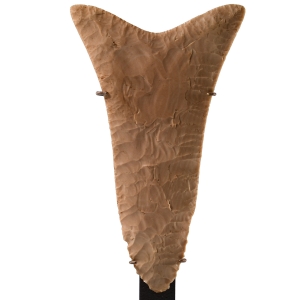
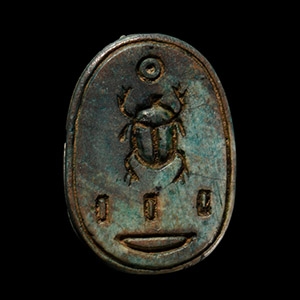
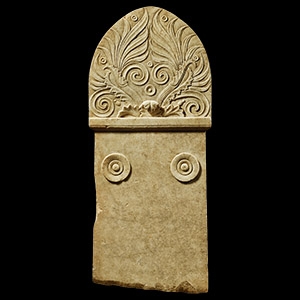
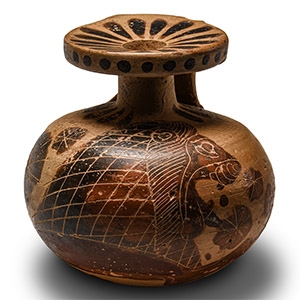
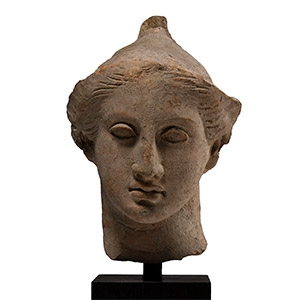
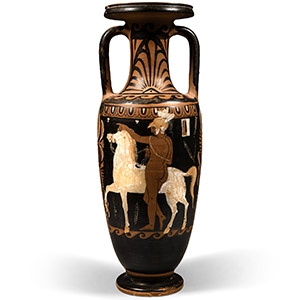
.jpg)
.jpg)
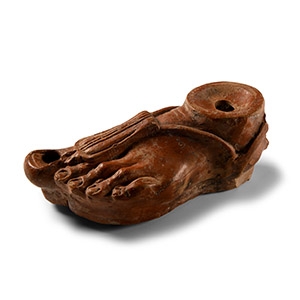
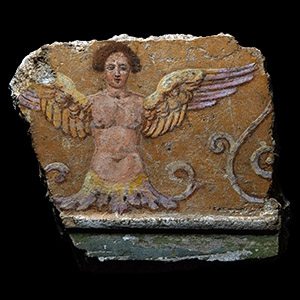
.jpg)
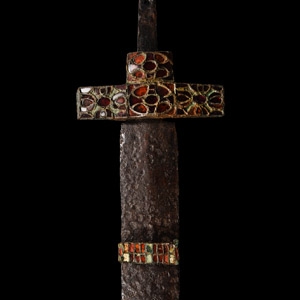
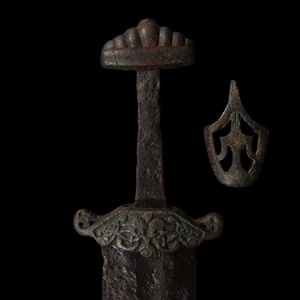
.jpg)
